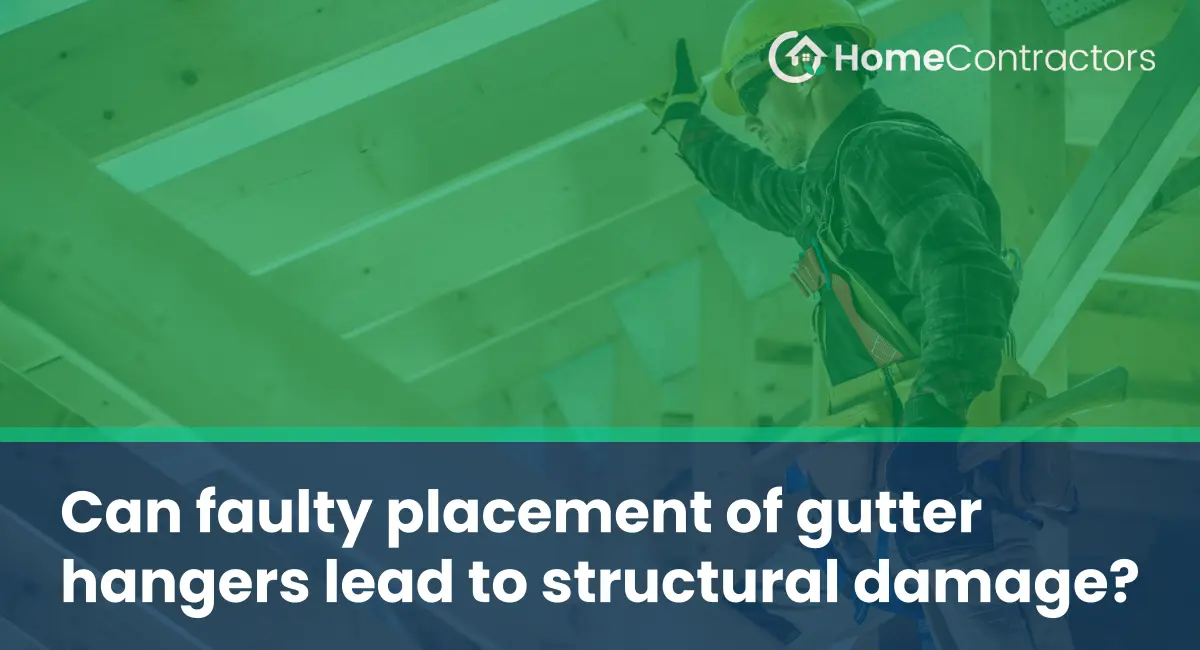Gutter hangers play a crucial role in maintaining the structural integrity of a building. They secure the gutters in place, ensuring proper water drainage and preventing potential damage to the foundation and walls. However, if the gutter hangers are installed incorrectly or not properly maintained, they can have a significant impact on the structural stability of the building. This article explores the potential risks associated with faulty placement of gutter hangers and the importance of proper installation.
Understanding Gutter Hangers:
Gutter hangers are typically brackets or hooks that attach the gutters to the fascia or roofline of a building. They are designed to provide support and distribute the weight of the gutters and collected water evenly. There are different types of gutter hangers available, including spike-and-ferrule hangers, strap hangers, and hidden hangers. Each type serves a specific purpose and requires appropriate placement to ensure the stability of the gutter system.
The Impact of Faulty Placement:
When gutter hangers are installed incorrectly, it can lead to various issues that may compromise the structural stability of the building. Here are some potential consequences of faulty gutter hanger placement:
1. Sagging Gutters:
Improperly placed gutter hangers can cause the gutters to sag or detach from the building entirely. This can result in water overflow, leading to soil erosion, foundation damage, and basement flooding. Sagging gutters also pose a safety risk as they can become an obstacle or fall off during strong winds.
2. Weakened Fascia Boards:
Gutter hangers need to be securely fastened to the fascia boards to provide adequate support. If the hangers are placed too far apart or attached to weak or rotting fascia, they may fail under the weight of the gutters. This can cause the fascia to deteriorate further, compromising the roofline and potentially leading to moisture damage.
3. Damage to Soffits and Siding:
Faulty gutter hanger placement can result in excessive water overflow or leakage, leading to damage to soffits and siding. Excessive moisture can cause rot, decay, and mold growth, compromising the structural integrity of the building and potentially leading to costly repairs.
Proper Installation and Maintenance:
To prevent structural damage caused by faulty gutter hanger placement, it is essential to follow proper installation guidelines. Here are some key considerations:
1. Hire Professionals:
It is advisable to hire professional gutter installers who have the expertise and experience to ensure proper placement of gutter hangers. They can assess the building’s unique needs, select the appropriate hanger type, and install them correctly.
2. Regular Inspections:
Regular inspections of the gutter system can help identify any potential issues with the hangers. Look for signs of sagging, detachment, or excessive strain on the fascia boards. If any problems are detected, prompt repairs should be undertaken to prevent further damage.
3. Maintenance and Cleaning:
Regular gutter cleaning is essential to ensure water can flow freely through the system. Leaves, debris, and other blockages can put excessive strain on the hangers and potentially displace them. Regular maintenance will help identify and address any issues before they escalate.
Proper placement of gutter hangers is crucial to maintain the structural integrity of a building. Faulty placement can lead to sagging gutters, weakened fascia boards, and damage to soffits and siding. To prevent these potential issues, it is essential to hire professionals for installation, conduct regular inspections, and perform routine maintenance. By taking these precautions, homeowners can ensure their gutter systems are functioning properly, protecting their property from structural damage caused by water infiltration.
